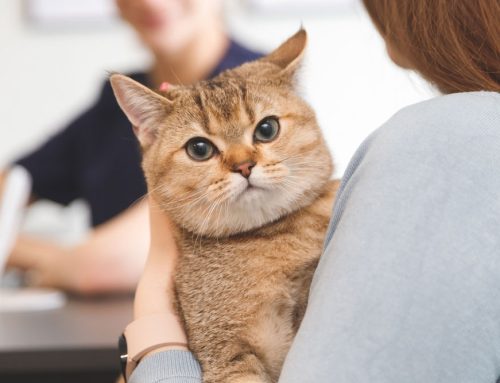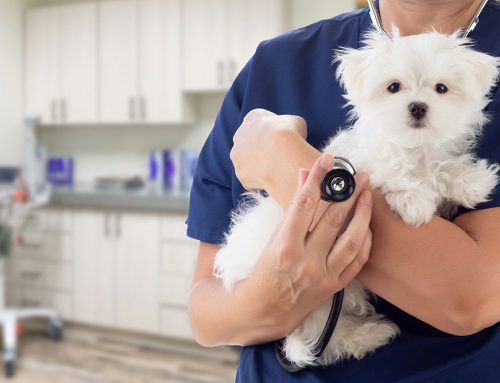You are responsible for ensuring that your four-legged friend remains safe and healthy. However, some hazards are easier to spot than others. Rodenticides are commonly overlooked dangers that many households use to control indoor and outdoor rodent populations. Rodenticide toxicity is a serious threat to pets and can cause severe health complications, which can be fatal. Our Family Veterinary Care of Oakdale team shares five rodenticide toxicity facts you need to know to help prevent your pet from being poisoned.
#1: Rodenticides contain ingredients that are highly toxic to pets
Rodenticides are formulated to kill rodents. However, these poisons do not discriminate among species. Many rodenticides’ active ingredients are as toxic to pets as they are to mice, rats, and other rodents. Various rodenticides’ toxicity levels depend on their active ingredients, each of which can harm an animal’s body in the following ways:
- Anticoagulant rodenticides (e.g., warfarin, brodifacoum, diphacinone) — These work by depleting the body’s vitamin K reserves, which are crucial for the blood clotting process. As a result, animals that ingest these substances experience uncontrolled, often internal, bleeding.
- Bromethalin — This potent neurotoxin affects the central nervous system by causing severe brain swelling (i.e., cerebral edema). Signs may include incoordination, paralysis, seizures, and death.
- Cholecalciferol (i.e., vitamin D3) — When ingested, this substance greatly increases the body’s calcium and phosphorus levels. This imbalance leads to kidney stones, tissue mineralization, and eventual kidney failure.
- Phosphides (e.g., zinc phosphide) — These chemicals react with stomach acid to produce toxic phosphine gas. Ingestion can lead to bloating, severe abdominal pain, shock, abnormal breathing, liver damage, and death.
#2: Secondary poisoning also threatens pets
A pet’s rodenticide toxicity can occur through direct consumption or secondary poisoning. Secondary rodenticide poisoning occurs when a pet eats a rodent that has consumed rodenticide. The poison can stay in the rodent’s system long enough that a pet can become ill from eating the poisoned prey. Therefore, even if your pet does not come in direct contact with a rodenticide, they can experience a secondary poisoning.
#3: All pets are at risk of rodenticide toxicity
All pets are at risk of rodenticide toxicity. However, based on their behavior, lifestyle, environment, and diet, the following pets are more likely to encounter and consume rodenticides:
- Dogs — Dogs are at significant risk of rodenticide toxicity as a result of their curious, scavenging nature. Some breeds are notorious for eating first and asking questions later, which can result in an accidental poisoning.
- Cats — Cats are also at risk for rodenticide toxicity, especially those who have access to the outdoors because they hunt rodents that may have ingested rodenticides.
- Birds — Some pet birds like to explore and pick up small items in their beaks. Doing so can potentially lead to accidental rodenticide ingestion.
- Rabbits and pocket pets — Pets, such as rabbits, guinea pigs, ferrets, and hamsters, are at risk for rodenticide toxicity if they have access to areas where these poisons have been placed.
- Reptiles — Reptiles, such as lizards and snakes, could ingest rodenticides directly. They can also experience secondary poisoning, especially if their diet includes rodents.
- Farm animals — Animals, such as horses, cows, pigs, goats, and chickens, are at risk for toxicity if rodenticides are used in their environment.
Any pet can experience poisoning if they have access to rodenticides. If you must use these products, exercise extreme caution, store them safely, and supervise your pets to ensure they do not come in contact with these dangerous substances.
#4: Pets may not show toxicity signs immediately
Recognizing rodenticide toxicity can be a challenge because the various signs that your pet may exhibit depend on the type of poison they have ingested. In some cases, the signs can take anywhere from a few hours to several days after ingestion to appear. Delayed sign onset can lead to delayed treatment, increasing the risk of severe outcomes. Your pet requires immediate veterinary care if they exhibit these common rodenticide toxicity signs:
- Weakness
- Lethargy
- Coughing
- Difficulty breathing
- Appetite loss
- Nosebleed
- Bloody urine or feces
- Bruising
- Seizures
#5: Prompt veterinary treatment is crucial for pets
If you suspect your pet has ingested a rodenticide or is exhibiting toxicity signs, you must ensure they receive immediate veterinary care. Depending on the rodenticide type and the time since ingestion, your pet’s rodenticide toxicity treatment may involve inducing vomiting, administering activated charcoal to bind the poison, vitamin K1 therapy, or other veterinarian-prescribed antidotes.
Prevent your pet from experiencing rodenticide toxicity by keeping these poisons stored securely or implementing alternative rodent control. If you suspect your pet has been exposed to a rodenticide, immediately contact our Family Veterinary Care of Oakdale team.











Leave A Comment